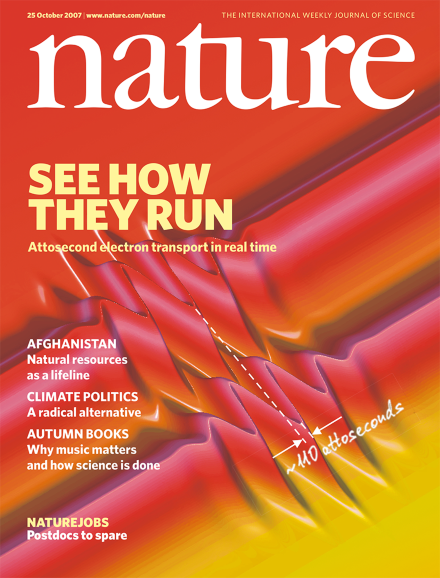Volume 449 Issue 7165, 25 October 2007
Editorial
Research Highlights
Journal Club
News
News in Brief
News
News in Brief
Column
News
News Feature
Correspondence
Commentary
Autumn Books
-
Harmony of the hemispheres
Special:

